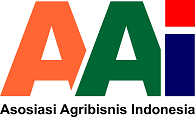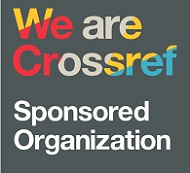Gender Analysis of Mobile Phones Utilization For Agricultural Services Among Farmers In Kwara State, Nigeria
Abstract
The study analyzed the use of mobiles phones for agricultural services among farming household in Kwara State Nigeria through the gender lens. These objectives were analyzed using descriptive statistics, and multivariate Probit model. Data were obtained from 181 respondents, comprising 96 male farmers and 85 female farmers using a multi-stage sampling procedure, Results reveal the mean age of the male farmers and female farmers as 45 years and 36 years respectively; their average annual income for male and female farmers were ₦307,057.97 and ₦256,057.69 respectively, Although, male farmers have greater access to land, extension contact, and vast experience in farming than their female counterparts it was confirmed from the results that the level of usage of mobile phones for agricultural services among both gender is high with a mean score of 2.1 for males and 2.0 for females. Male farmers use phones for access to timely and reliable information to support farmers decision making, while majority of the female farmers prefer using their mobile phones in cutting down on travel cost. It was concluded age, household size, years of schooling, income per annum, years of farming experience, and farm size of each gender was a critical factor that influence positively the level of utilization of mobile phones for agricultural services. Policies that address access to the use of mobile phones and other digital technologies for agricultural services should be gender smart.
Keywords
Full Text:
PDFReferences
Abdulazeez, M. L., Omotesho, K. F., Adekola, O. F. & Adekunle, D. (2014). Assessment of land management practices in food crops production among small scale farmers in Kwara State, Nigeria. International Journal of Agricultural Management and Development (IJAMAD), 4(2), 105-116. https://doi.org/10.22004/ag.econ.246106
Afolayan, T. O., Aiterebhe, E. F., Mejabi, V., Oyekunle, R. A., Bello, O., & Balogun, N. (2015). Mobile phone usage in rural communities in Kwara state, Nigeria. Information Technologist, 12(2), 1-15. https://www.ajol.info/index.php/ict/article/view/130097
Ajayi, F., Olanrewaju, K., Akintunde, O., Bamiwuye, O., & Agboola, T. (2021). Determinants of mobile phones usage for agricultural purposes among arable crop farmers in Iwo zone of Osun State, Nigeria. Poljoprivredna tehnika, 46(4), 30-40. https://scindeks.ceon.rs/article.aspx?artid=0554-55872104030A
Asa, U. A. & Uwem, C. A. (2017). Utilization of Mobile Phones for Agricultural Purposes by Farmers in Itu Area, Nigeria. European Scientific Journal, 13(19), 395-402. https://doi.org/10.19044/esj.2017.v13n19p395
Barnabas, B., Adi, Z. A., Abubakar, N. B., & Babuga U. S. (2019). Mobile Phone Utilization in Agricultural Information Dissemination among Farmers of Bauchi Local Government Area. African Scholar Journal of Agriculture and Agricultural Tech., 15(1), 89-100. https://www.africanscholarpublications.com/african-scholar-journal-of-agriculture-and-agricultural-technology-ajaat-vol-15-no-1/
Burrell, J. (2010). Evaluating shared access: Social equality and the Circulation of Mobile Phones in Rural Uganda. Journal of Computer-Mediated Communication, 15(2010), 230-250. https://doi.org/10.1111/j.1083-6101.2010.01518.x
Carvalho, A., & Fernandes, T. (2018). Understanding customer brand engagement with virtual social communities: A comprehensive model of drivers, outcomes and moderators. Journal of Marketing Theory and Practice, 26(1-2), 23-37. https://doi.org/10.1080/10696679.2017.1389241
Chhachhar, A. R., & Hassan, M. S. (2013). The Use of Mobile Phones Among Farmers for Agricultural Development. International Journal of Scientific Research, 2(6), 95-98. https://doi.org/10.19044/esj.2017.v13n19p395
FAO. (2018). The State of Food Security and Nutrition in the World 2018. Accessed: Juny 15, 2023. Available from: https://www.fao.org/3/I9553EN/i9553en.pdf
Heang, J. F., & Khan, H. U. (2015). The role of internet marketing in the development of agricultural industry: a case study of China. Journal of Internet Commerce, 14(1), 65-113. https://doi.org/10.1080/15332861.2015.1011569
Hoffman, D. L., & Fodor, M. (2010). Can you measure the ROI of your social media marketing?. MIT Sloan management review. Accessed: Juny 15, 2023. Available from: https://sloanreview.mit.edu/article/can-you-measure-the-roi-of-your-social-media-marketing/
Ibitoye, S. J., & Onimisi, J. A. (2013). Influence of training on farmer's productivity in poultry production in Kogi State, Nigeria. International Journal of Poultry Science, 12(4), 239-244. https://doi.org/10.3923/ijps.2013.239.244
Ilahiane, H. (2007). Impacts of information and communication technologies in agriculture: Farmers and mobile phones in Morocco. American Anthropological Association Conference, 1(3), 24-40.
Kayode, A.O., Alabi, A. A., & Okunade, E.O. (2019). Mapping Gender Roles in Tomato Production and Preservation in Afijio Local Government Area of Oyo State, Nigeria. Agricultural Economics and Extension Research Studies, l7(2), 89-98. https://uilspace.unilorin.edu.ng/handle/20.500.12484/8930
Khan, N. A., Qijie, G., Ali, S., Shahbaz, B., & Shah, A. A. (2019). Farmers' use of mobile phone for accessing agricultural information in Pakistan. Ciência Rural, 49(10), 1-12. https://doi.org/10.1590/0103-8478cr20181016
Khanna, M. (2021). Digital transformation of the agricultural sector: pathways, drivers and policy implications. Applied Economic Perspectives and Policy, 43(4), 1221-1242. https://doi.org/10.1002/aepp.13103
Komolafe, S. E., Adesiji, G. B., & Akanbi, S. U. O. (2022). The Contribution of Yam Farming Activities To Livelihood of Farmers In Ekiti State, Nigeria. Jambura Agribusiness Journal, 4(1), 1-12. http://dx.doi.org/10.37046/jaj.v4i1.13706
Martin, B. L., & Abbott, E. (2011). Mobile phones and rural livelihoods: Diffusion, uses, and perceived impacts among farmers in rural Uganda. Information Technologies & International Development, 7(4), 17-34. http://itidjournal.org/index.php/itid/article/view/789.html
Martin, B. & Abbott, D. (2010). Development calling: The Use of Mobile Phones in Agriculture Development in Uganda. Greenlee School of Journalism and Communication, Iowa State University, 1-13 https://www.mak.ac.ug/documents/IFIP/DevelopmentCalling.pdf
Muto, M., & Yamano, T. (2009). The impact of mobile phone coverage expansionon market participation: Panel data evidence from Uganda. World Development, 37(12), 1887-1896. https://doi.org/10.1016/j.worlddev.2009.05.004
Ng'ethe, J. W. (2010). Mobile phone usage in rural Kenya for business: A survey study in Machakos District. Bachelor Degree Thesis, School of Computing and Informatics. Accessed: March 18, 2023. Available from: http://erepository.uonbi.ac.ke/handle/11295/22197
Ogunniyi, M, D., & Ojebuyi, B. R. (2016). Mobile Phone Use for Agribusiness by Farmers in Southwest. Nigeria Journal of Agricultural Extension, 20(2), 172-187. https://doi.org/10.4314/jae.v20i2.13
Ogutu, S. O., Okello, J. J., & Otieno, D. J. (2014). Impact of information and communication technology-based market information services on smallholder farm input use and productivity: The case of Kenya. World Development, 64(2014), 311-321. https://doi.org/10.1016/j.worlddev.2014.06.011
Omoruyi, O. (2023). Nigeria's mobile gender gap: 27% of female smartphone owners do not use the internet. Accessed: Juny 15, 2023. Available from: https://technext24.com/2023/06/08/mobile-gender-gap-in-nigeria-2023/
Omotesho, K F., Akinrinde, A. F., Kayode, A. O., & Olabode, D. A. (2021). An analysis of the capacity building needs of rice farmers in Kwara State, Nigeria. Bulg. J. Agric. Sci., 27(2), 417-426. https://www.agrojournal.org/27/02-25.pdf
Porter, M. E. (2001). Strategy and the Internet. Harvard Business Review, (March 2001), 1-20. https://hbr.org/2001/03/strategy-and-the-internet
Poushter, J. (2016). Smartphone ownership and internet usage continues to climb in emerging economies. Pew research center, 22(1), 1-44. https://www.diapoimansi.gr/PDF/pew_research%201.pdf
Rathore, S., & Sharma, A. (2012). Impact of mobile phones on the lifestyle of management students of Pantnagar University. Interaction, 30(2), 61-68. https://www.indianjournals.com/ijor.aspx?target=ijor:jcs1&volume=30&issue=2&article=012
Ratnadiwakara, D., De Silva, H., & Soysa, S. (2008). Transaction costs in agriculture: From the planting decision to selling at the wholesale market: A case-study on the feeder area of the Dambulla dedicated economic centre in Sri Lanka. In 3rd Communication Policy Research, South Conference, Beijing, China, 1-18. https://dx.doi.org/10.2139/ssrn.1555458
Salami, M., Fateru, B., Osasona, K., & Abdulsalam, N. (2020). Gender Analysis of Maize Production in Asa Local Government Area of Kwara State, Nigeria. Agricultura, 1(2), 113-114. https://agris.fao.org/agris-search/search.do?recordID=DJ20220218684
Salia, M., Nsowah"Nuamah, Nicholas N. N., & Steel, W. F. (2011). Effects of mobile phone use on artisanal fishing market efficiency and livelihoods in Ghana. The Electronic Journal of Information Systems in Developing Countries, 47(1), 1-26. https://doi.org/10.1002/j.1681-4835.2011.tb00334.x
Statista. (2019). Mobile phone users worldwide. Technology and telecommunication statistics. Accessed: March 18, 2023. Available from: https://www.statista.com/statistics/274774/forecast-of-mobile-phone-users-worldwide/
Summers, K. (2019). Mobile Phones, Social Relations, and the Gatekeepers to Women's Empowerment in Maasai Households. Doctoral Dissertation, Virginia Tech. Accessed: March 18, 2023. Available from: https://vtechworks.lib.vt.edu/handle/10919/89912
DOI: https://doi.org/10.37046/jaj.v5i1.19447
Refbacks
- There are currently no refbacks.
Copyright (c) 2023 Author(s)

This work is licensed under a Creative Commons Attribution-NonCommercial-ShareAlike 4.0 International License.
Jambura Agribusiness Journal (P-ISSN: 2685-5860, E-ISSN: 2685-5771) is licensed under a Creative Commons Attribution-NonCommercial-ShareAlike 4.0 International License. Powered by Public Knowledge Project OJS










